From Manual to Smart: Pallet Inverters Transforming Saudi Arabia's Material Handling
In warehouses and factories across Saudi Arabia, teams spend countless hours manually handling heavy loads. They transfer goods from one pallet to another by hand. It is a slow, difficult, and often dangerous process. This old method creates huge bottlenecks in the supply chain. It leads to product damage, worker injuries, and delayed shipments. These issues directly hurt your bottom line and your reputation. But there is a much better way. Smart pallet inverters are here to solve these problems. They offer an automated, efficient, and safe alternative that is changing the material handling landscape in the Kingdom.
Pallet inverters are transforming material handling in Saudi Arabia by automating the entire process of transferring goods between pallets. The machine works by securely clamping and rotating a full load 180 degrees to quickly and safely switch the pallet underneath. This simple but powerful action boosts operational speed, reduces the need for manual labor, enhances worker safety, and minimizes product damage, perfectly aligning with the country's vision for smarter and more efficient industrial operations.
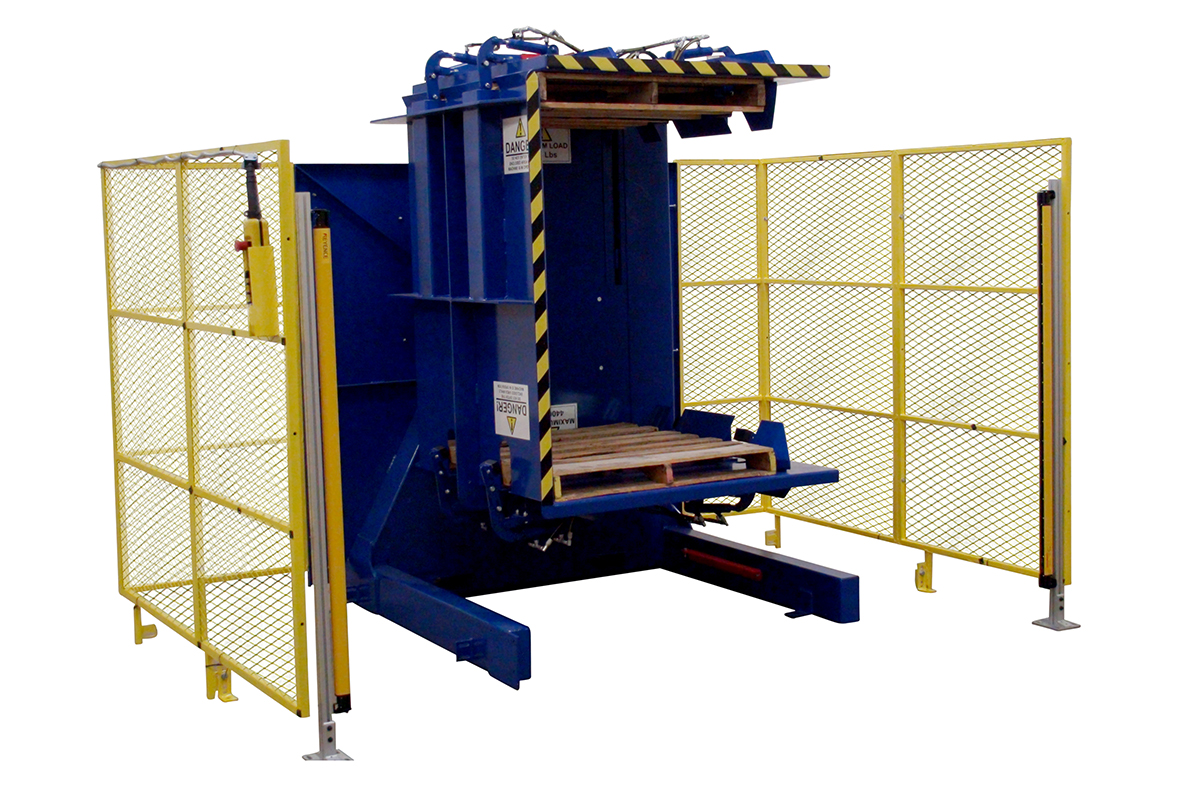
This shift from manual work to a smart machine is more than just a simple upgrade. It marks a fundamental change in how a modern facility operates. It is a strategic move towards greater efficiency and resilience. But to truly understand the huge impact of this technology, we need to look closer. We must explore the specific challenges these machines solve and the valuable opportunities they create for businesses in Saudi Arabia. Let's dive deeper into why this transformation is happening now and what it means for you.
Why are traditional pallet handling methods becoming obsolete in Saudi Arabia?
Your team might be using forklifts or pure manpower to re-stack goods from one pallet to another. You probably see this as a normal, necessary part of the daily workflow. But this "normal" task is costing your business much more than you realize. It is a hidden drain on your resources, a constant safety risk, and a primary reason your operations struggle to keep up with today's demands. Recognizing why these old methods are failing is the first step toward building a faster, safer, and more profitable future.
Traditional pallet handling methods are becoming obsolete in Saudi Arabia because they are inherently slow, heavily dependent on manual labor, and pose significant safety risks. These outdated processes simply cannot match the speed, accuracy, and high-efficiency requirements of the Kingdom's rapidly modernizing logistics, manufacturing, and export sectors.
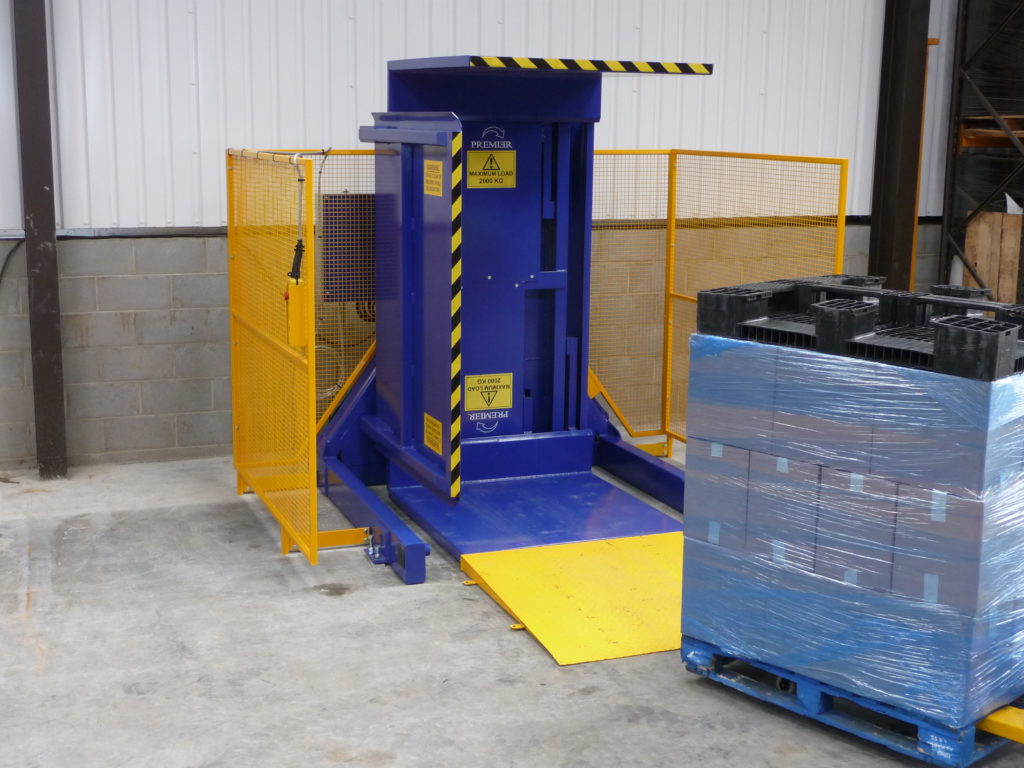
The Hidden Costs of Manual Labor
When you think about the cost of manual labor, you likely think of hourly wages. But the true cost goes much deeper. You have to factor in recruitment and training costs for new workers. High turnover rates in physically demanding jobs mean these costs are constant. Then there are the costs of work-related injuries. A single back injury can lead to significant medical bills, insurance premium hikes, and lost productivity. Workers who are tired or strained are also more likely to make mistakes, such as dropping or damaging valuable products. These hidden expenses add up quickly and eat directly into your profit margins. A machine does not get tired, does not require breaks, and performs the task with the same precision every single time, eliminating these variable and unpredictable costs.
The Inefficiency Bottleneck
In a fast-paced market like Saudi Arabia, speed is everything. Traditional pallet handling is a major bottleneck. A team of two or three workers might take 15 to 20 minutes to manually transfer a single pallet load. If your facility processes hundreds of pallets a day, that time adds up to hours of lost productivity. This slowdown doesn't just happen at one point; it creates a ripple effect. It delays receiving, slows down production lines waiting for materials, and pushes back shipping deadlines. It means your trucks are waiting longer to be loaded, and your customers are waiting longer for their orders. In a competitive environment, these delays can damage your reputation and lead to lost business. This single, slow process can hold back the efficiency of your entire operation.
Safety and Compliance in a Modernizing Kingdom
Saudi Arabia's Vision 2030 is driving a nationwide push for higher operational standards, including improved workplace safety. Manual handling of heavy loads is one of the leading causes of workplace injuries. Relying on these outdated methods puts your company at risk of failing to meet modern safety compliance standards. It also sends a negative message to your employees about their well-being. A safer workplace leads to better morale, lower employee turnover, and a stronger company culture. Investing in automated solutions like pallet inverters demonstrates a commitment to both safety and modernization, aligning your business with the country's strategic goals.
| Metric | Traditional Manual Method | Pallet Inverter Method |
|---|---|---|
| Time per Pallet Load | 15-25 minutes | < 60 seconds |
| Labor Required | 2-3 Workers | 1 Operator |
| Product Damage Rate | 3-5% (average) | < 0.5% |
| Risk of Worker Injury | High (lifting, repetitive strain) | Extremely Low |
| Throughput per Hour | 2-4 Pallets | 40-60 Pallets |
How do pallet inverters boost operational efficiency and safety?
You have clear targets for operational efficiency. You also have safety records you must maintain. Every manager knows that daily operations are filled with small risks and tasks that hurt performance. A single pallet of damaged goods can erase the profit from an entire order. A serious worker injury can cause shutdowns, investigations, and a drop in team morale. These are the constant worries that keep you up at night. A pallet inverter is designed to directly address these two critical areas. It brings a level of control, speed, and predictability that manual methods can never achieve.
Pallet inverters boost operational efficiency and safety by completely mechanizing the load transfer process. A single operator can use the machine to swap a pallet in less than 60 seconds. This incredible speed drastically reduces handling time. At the same time, the process eliminates all manual lifting and securely clamps the product, preventing any shifting or damage during the 180-degree rotation.
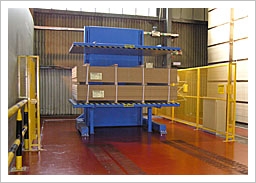
A Revolution in Speed and Throughput
The most immediate benefit you will see is a massive increase in speed. Imagine a truck arrives with 20 pallets that need to be transferred to your in-house plastic pallets. Manually, this task could take a team of workers hours to complete, creating a long queue at the loading dock. With a pallet inverter, a single operator can finish the entire job in less than 30 minutes. This is not just a small improvement; it is a complete transformation of your workflow. This new capability allows you to process more goods, load and unload trucks faster, and move materials through your facility at a pace that matches market demand. You are not just saving time; you are creating new capacity without adding more staff or space.
Engineered for Safety First
I have spent my entire career as an engineer, and I know that good design puts safety first. Pallet inverters are a perfect example of this principle. The machine's design eliminates the most common causes of handling injuries. There is no manual lifting, bending, or straining. The load is held securely by hydraulic clamps, and the rotation is smooth and controlled. Many models come with additional safety features like perimeter fencing, light curtains that stop the machine if someone gets too close, and dual-handed controls that ensure the operator is standing clear during operation. By automating the riskiest handling tasks, you are not just protecting your workers; you are building a more resilient and responsible operation.
Protecting Your Product, Protecting Your Profit
Every time a product is damaged, your profit takes a hit. Manual handling is imprecise. Boxes get dropped, bags get torn, and containers get crushed. A pallet inverter handles the entire load as one solid block. The clamping pressure is often adjustable, so you can handle delicate items like glass bottles or sensitive electronics just as safely as robust goods like steel coils or bags of cement. The controlled 180-degree rotation ensures there is no shock or impact on the product. This leads to a dramatic reduction in damage and waste. That means fewer customer complaints, fewer returns, and more profit kept in your business.
| Feature | Impact on Efficiency | Impact on Safety |
|---|---|---|
| Automated 180° Rotation | Reduces transfer time from minutes to seconds. | Eliminates manual lifting and re-stacking. |
| Secure Clamping System | Prevents product shifting and falling. | Holds the load safely in place; no risk of collapse. |
| Single Operator Control | Frees up 1-2 workers for other valuable tasks. | Operator stays clear of moving parts. |
| Adjustable Pressure | Allows handling of various product types. | Prevents product damage that could create hazards. |
| Safety Fencing/Sensors | N/A | Creates a protected work zone, stopping machine if breached. |
What is the real ROI of investing in a pallet inverter for a Saudi Arabian business?
I know that any new piece of equipment is a significant capital investment. When you look at the price, it is easy to hesitate. You might think, "We are getting by with our current methods, is this machine really worth the cost?" That hesitation is normal, but it can cause you to miss out on huge long-term financial benefits. The real value of a pallet inverter is not in the steel it is made from, but in the costly problems it solves and the money it saves every single day. When you look at the complete picture and calculate the true Return on Investment (ROI), the decision becomes very clear.
The real ROI of a pallet inverter for a business in Saudi Arabia is driven by substantial and ongoing reductions in operational costs. These savings come directly from lower labor expenses, a dramatic drop in costs tied to product damage, and a significant boost in throughput that increases revenue potential without needing to hire more people.
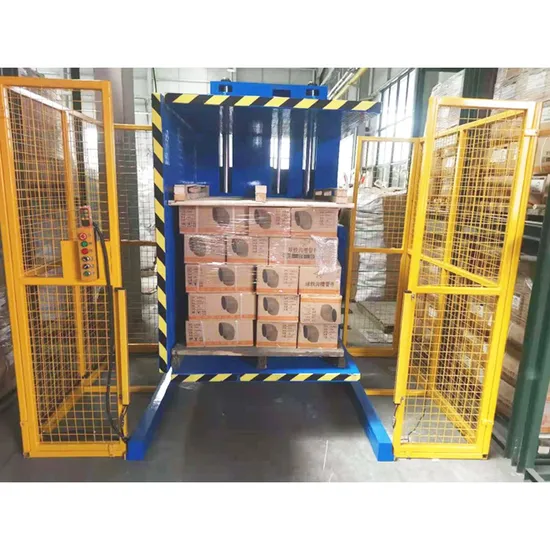
Calculating Your Direct Cost Savings
This is where the numbers speak for themselves. Let's break down the most obvious savings. First, labor. Calculate how many employee hours are spent each day just on transferring loads. Multiply that by your average hourly wage, including benefits. A pallet inverter can reduce that labor requirement by up to 90%, freeing up your valuable team members for more productive tasks. Second, product damage. Estimate the value of goods lost to handling damage each month. A pallet inverter can virtually eliminate this loss. For many companies, this saving alone can be thousands of dollars per month. Third, consider pallet costs. If you are shipping goods on high-quality wood or plastic pallets, you are losing money with every shipment. An inverter allows you to quickly swap loads to cheaper one-way shipping pallets, keeping your expensive pallets in-house. These three areas provide a clear, calculable return that often results in a payback period of less than 18 months.
The Indirect Value You Unlock
The ROI goes beyond just direct cost cutting. Think about the value of increased throughput. By processing loads faster, you can take on more orders, serve more customers, and generate more revenue with the same facility and staff. This is a powerful driver of growth. Next, consider the financial impact of a safer workplace. Fewer injuries mean lower insurance premiums, no fines from safety violations, and less lost time. It also improves worker morale, which leads to lower turnover and reduced hiring and training costs. Finally, there is the value of your reputation. When you can process orders faster and with less damage than your competitors, you become known as a reliable, high-quality partner. This strong reputation is a priceless asset that attracts and retains top-tier clients.
A Simple ROI Breakdown
Let's look at a conservative example for a mid-sized operation:
| Category | Description | Calculation |
|---|---|---|
| A. Initial Investment | Cost of Pallet Inverter + Installation | - $35,000 |
| B. Annual Labor Savings | 2 Workers x 4 hours/day x $15/hr x 250 days | + $30,000 |
| C. Annual Damage Savings | 1% reduction on $2.5M of handled goods | + $25,000 |
| D. Annual Pallet Savings | 500 expensive pallets saved/year @ $20/pallet | + $10,000 |
| Total Annual Savings | (B + C + D) | $65,000 |
| Payback Period | A / Total Annual Savings | ~ 6.5 Months |
Note: These are estimates. We can help you calculate a precise ROI for your specific operation.
How can smart pallet inverters integrate into a digitized warehouse (Industry 4.0)?
As a forward-thinking leader, you are already considering the future of your operations. You are likely implementing or planning for systems like a Manufacturing Execution System (MES) or using data analytics to make smarter decisions. But there is a common challenge. Sometimes, a new piece of automated equipment can feel like an isolated island. It works well on its own, but it doesn't communicate with your other systems. This limits its true potential and prevents you from achieving a fully connected, "smart" factory. The good news is that modern pallet inverters are built for this new world. They are not just standalone machines; they are intelligent assets ready to become a vital part of your Industry 4.0 strategy.
Smart pallet inverters integrate seamlessly into a digitized warehouse by connecting with your central control systems, such as a Warehouse Management System (WMS) or MES. This connectivity allows for full automation, enabling the inverter to receive commands, execute pallet-swapping tasks without human input, and report back crucial data on cycle times, load counts, and its own operational health.
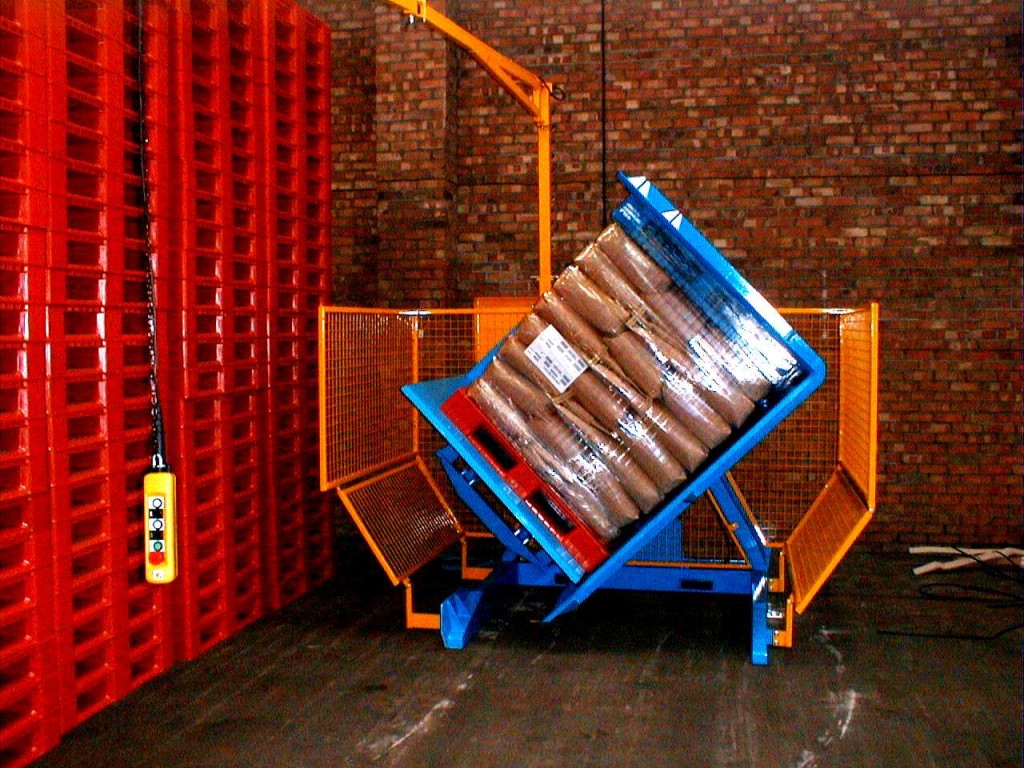
From Standalone Machine to Connected Asset
The key to integration is communication. A smart pallet inverter is equipped with a Programmable Logic Controller (PLC) that can talk to other automated systems. Imagine a fully automated receiving line. An Automated Guided Vehicle (AGV) delivers a pallet of raw materials from a truck. It places it on an infeed conveyor. The conveyor moves the pallet into the inverter. Your WMS sends a signal to the inverter: "This is product XYZ, transfer it to a cleanroom-compliant plastic pallet." The inverter performs the task automatically. The new pallet then moves down the line for storage or production. In this scenario, the pallet inverter is no longer just a machine; it is an intelligent node in a larger automated ecosystem, executing tasks based on real-time data from your central system.
The Power of Operational Data
A smart inverter does more than just follow orders; it provides valuable data. This is crucial for leaders who want to manage by the numbers. The machine can track and report:
- Cycle Counts: How many pallets are processed per hour or per shift? This gives you precise throughput data to measure efficiency.
- Operating Hours: The machine logs its own runtime, allowing for predictive maintenance scheduling. Your system can alert you, "This machine has run for 1,000 hours, it's time for a hydraulic fluid check." This prevents unexpected downtime.
- Fault Codes: If an issue occurs, the inverter can send a specific error code directly to your maintenance team's dashboard. This allows for faster diagnosis and repair, minimizing interruptions.
This stream of data feeds directly into your goals for higher uptime and data-driven management, turning your entire operation into a transparent, measurable system.
Paving the Way for Full Automation
Integrating a pallet inverter is often a key step on the path to a fully automated facility. It solves a complex handling task that is difficult to automate with robots alone. Once this link in the chain is automated, it becomes much easier to connect the processes before and after it. It bridges the gap between your receiving docks, your storage systems (like ASRS), and your production lines. It becomes the reliable hub for all pallet-based transitions within your facility, enabling a smooth, end-to-end flow of materials with minimal human intervention.
| Integration Level | Description | Key Feature |
|---|---|---|
| Level 1: Standalone | Operator manually loads and activates the machine. | Push-button controls. |
| Level 2: Semi-Automated | Machine is part of a conveyor line but requires an operator to start the cycle. | Integrated with conveyors. |
| Level 3: Integrated | Machine receives start/stop signals from the line's PLC. | PLC-to-PLC communication. |
| Level 4: Smart | Machine receives detailed commands from WMS/MES and sends back operational data. | Full WMS/MES integration. |
My Insight
Over the years, I've had conversations with hundreds of business owners and plant managers like Javier Morales. Whether they are in Mexico, Saudi Arabia, or right here in China, they all face similar pressures: rising energy costs, aging equipment, and the constant need to become more efficient to stay competitive. These are not local problems; they are the global challenges of modern industry.
I remember a client who ran a large food processing plant. For years, they struggled with wooden pallets. They were a contamination risk, and splinters would constantly damage the packaging. They hesitated to invest in an inverter, thinking their manual process was "good enough." After we installed one, the manager called me a few months later. He told me it wasn't just about saving money on damaged goods. The biggest change was in his team's morale. He could move his best people away from the back-breaking work of re-stacking and onto more valuable quality control roles. His entire operation became smoother and safer overnight.
When I see a leader like Javier aiming to cut operational costs by 8% or boost uptime to 95%, I know it's not about one single, magical machine. It's about a mindset. It's about systematically identifying and eliminating waste—wasted time, wasted materials, and wasted human potential. A pallet inverter is a perfect tool for this because it directly attacks all three. It's a simple solution to a complex problem, and it delivers a clear, measurable return.
This is why I founded SHJLPACK on the principle of being a "Total Solution" provider. We don't just want to sell you a machine. We want to understand your challenges and your goals. We want to be the strategic partner you call to discuss how a piece of equipment fits into your bigger vision for digitalization and efficiency. The journey from manual to smart is built on a series of smart, practical steps. Often, automating a critical bottleneck like pallet handling is the most logical and highest-impact place to start.
Conclusion
Investing in a pallet inverter is not just an equipment upgrade. It is a strategic move towards a safer, smarter, and more profitable future for your material handling operations in Saudi Arabia.





